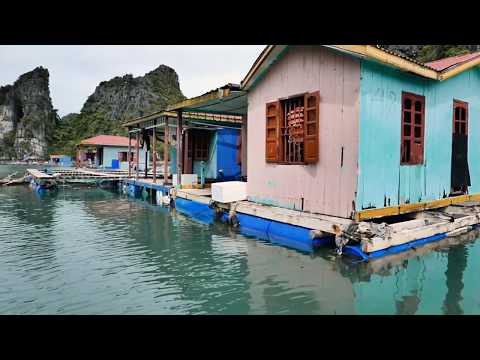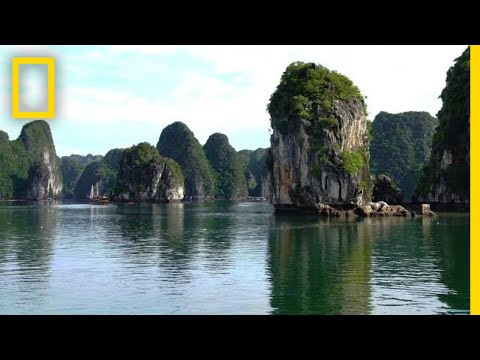Exploring Vietnam’s Enchanting Floating Houses In Halong Bay

Looking for an offbeat adventure in Vietnam? Discover the enchanting floating houses of Halong Bay, a prime attraction that adds to the bay’s beauty. This article guides you through these captivating water villages, offering insights into their history, architecture and cultural significance.
Dive in: voyage awaits on Vietnam’s serene waters!
Key Takeaways
- Halong Bay in Vietnam is home to enchanting floating houses that are a unique and charming attraction.
- These floating villages have a rich history, dating back over 200 years, and are an important part of Vietnamese culture.
- Visitors can explore four remaining floating villages in Halong Bay: Cua Van Floating Village, Vung Vieng Floating Village, Cong Dam Floating Village, and Ba Hang Floating Village. These villages offer picturesque views and opportunities to experience the local culture.
- The design of these floating homes focuses on sustainability, using materials like bamboo and incorporating eco-friendly practices.
The History of Halong Bay

Halong Bay has a rich history. It started with two fishing communities in the early 19th century. The bay is in northeast Vietnam and has many limestone formations. These rock shapes grew from the sea over millions of years.
People also found natural caves here which add to its charm. Today, Halong Bay is more than just a coastal region. It is a tourist attraction known for its scenic beauty and links to Vietnamese history.
This love for Halong Bay isn’t new either – it’s long been seen as an important place in Vietnam.
Because of all this, Halong Bay became a UNESCO World Heritage Site. That tells us how special it really is!
What Led to the Creation of Floating Villages in Halong Bay?
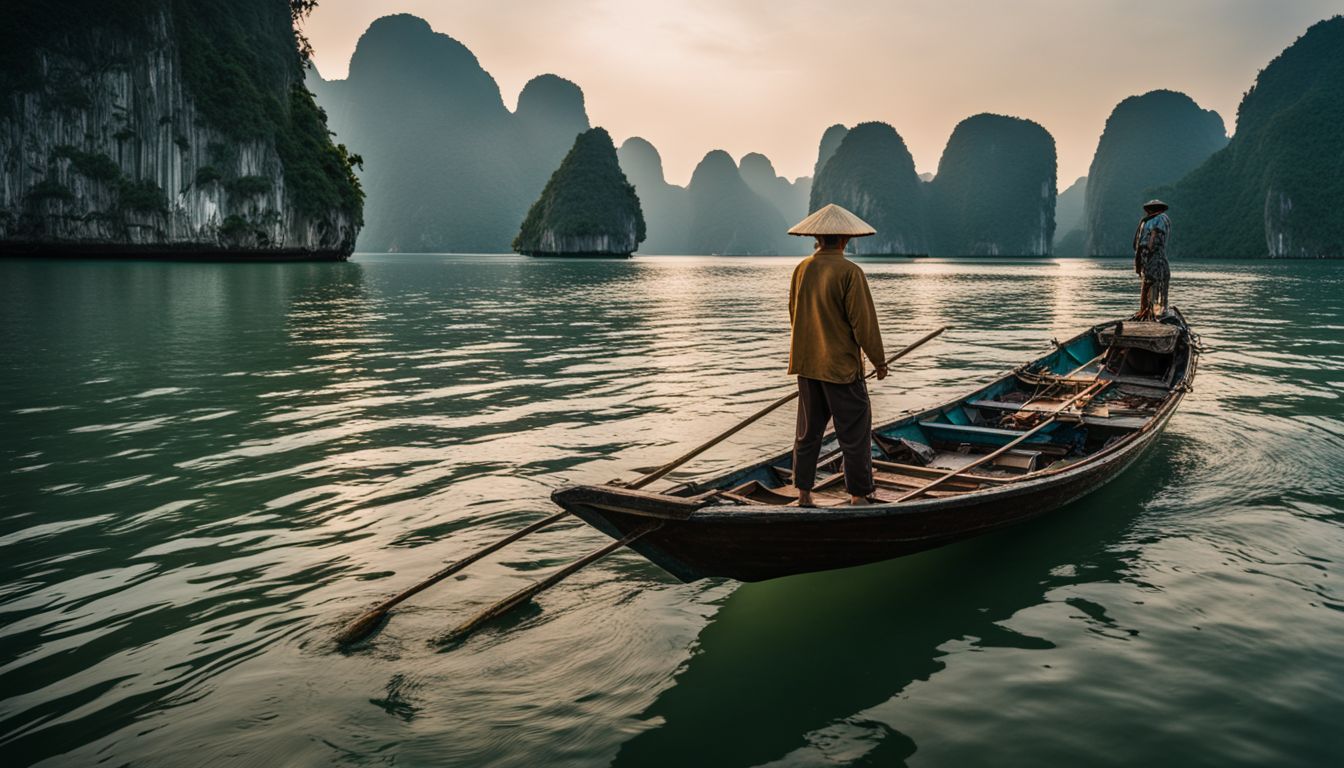
People came to Halong Bay for its rich sea life. They saw a lot of fish swimming in the waves. The fishing industry started to grow because of this. So, people made homes that could float on water over 200 years ago! This way, they could catch fish right from their houses.
These became known as floating villages and it is a big part of local traditions.
Legends also play a role in why these communities chose this way of life. One legend talks about dragons sent by gods to help Vietnam’s people against their foes. These dragons loved the bay area and decided to stay there after winning the fight for Vietnam’s people.
Today, these floating villages have become tourist hotspots due to their historical heritage and cultural significance caught within the view of gorgeous coastlines and clear waters full with marine biodiversity every day.
The uniqueness about living on water while earning livelihoods through fishing has caught everyone’s fascination making them one top visited places in Halong Bay!
The Current Status of Floating Villages
 Cua Van Floating Village showcasing their unique features and colorful boats.” title=”A vibrant photo of fishermen in Cua Van Floating Village showcasing their unique features and colorful boats.” class=”awimage” />
Cua Van Floating Village showcasing their unique features and colorful boats.” title=”A vibrant photo of fishermen in Cua Van Floating Village showcasing their unique features and colorful boats.” class=”awimage” />
Today, the floating homes in Halong Bay stand as a symbol of cultural preservation. They serve both their old and new roles. Fishermen still live there but now they are also tourist hot spots.
Visitors from all over come to see them.
The people here make money by fishing and tourism now. This balance helps keep these water communities alive and well. Still, keeping everything good for the people who live there is important too.
Efforts are made every day to keep this special place safe for future generations.
The 4 Remaining Floating Villages in Halong Bay

There are four remaining floating villages in Halong Bay: Cua Van Floating Village, Vung Vieng Floating Village, Cong Dam Floating Village, and Ba Hang Floating Village.
Cua Van Floating Village

Cua Van Floating Village is one of the four remaining floating villages in Halong Bay. This village is a hidden gem and has gained recognition as one of the most picturesque villages in the world.
Built entirely on water, Cua Van offers a unique experience for travelers who want to immerse themselves in the local culture. The village is part of Halong Bay’s tourism development programs and provides opportunities to learn about local traditions and customs while enjoying the beauty of this water-based community.
Vung Vieng Floating Village

Vung Vieng Floating Village is one of the four remaining floating villages in Halong Bay, Vietnam. This small fishing village offers breathtaking views and a chance to experience the local culture.
The villagers rely on fishing as their main livelihood and have preserved their traditional lifestyle for generations. Tourists can take boat tours to explore the village, interact with the locals, and witness the scenic beauty of the surrounding area.
The combination of natural wonders and cultural heritage makes Vung Vieng Floating Village a must-visit destination for those seeking an authentic and sustainable tourism experience in Halong Bay.
Cong Dam Floating Village
 Cong Dam Floating Village is one of the four main villages in Halong Bay, Vietnam. This secluded attraction offers a unique and immersive experience for tourists. Unlike other popular areas, Cong Dam Floating Village remains largely untouched by visitors, making it a hidden gem to explore.
Cong Dam Floating Village is one of the four main villages in Halong Bay, Vietnam. This secluded attraction offers a unique and immersive experience for tourists. Unlike other popular areas, Cong Dam Floating Village remains largely untouched by visitors, making it a hidden gem to explore.
The village is known for its colorful houses that stand on stilts or rafts above the water. It provides a quiet and peaceful location with beautiful scenery to enjoy during your visit to Halong Bay.
Ba Hang Floating Village
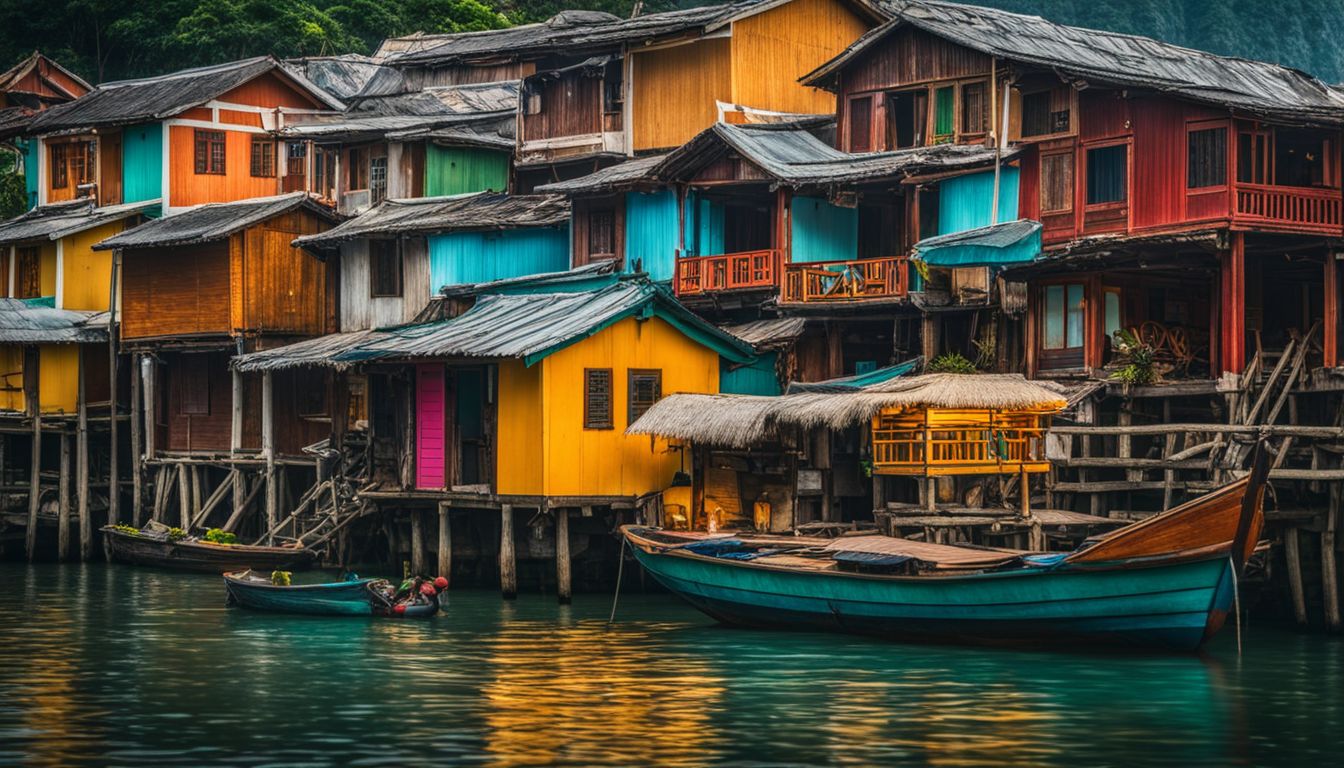
Ba Hang Floating Village is one of the four remaining floating villages in Halong Bay. It’s located between two karst formations and is home to 50 families. The village offers a peaceful and rustic atmosphere, with colorful wooden houses standing on stilts or rafts.
Ba Hang Floating Village is conveniently located near famous attractions like Thien Cung cave and Dau Go cave, making it an ideal spot for tourists to visit.
Sustainable Design and Architecture in Floating Homes
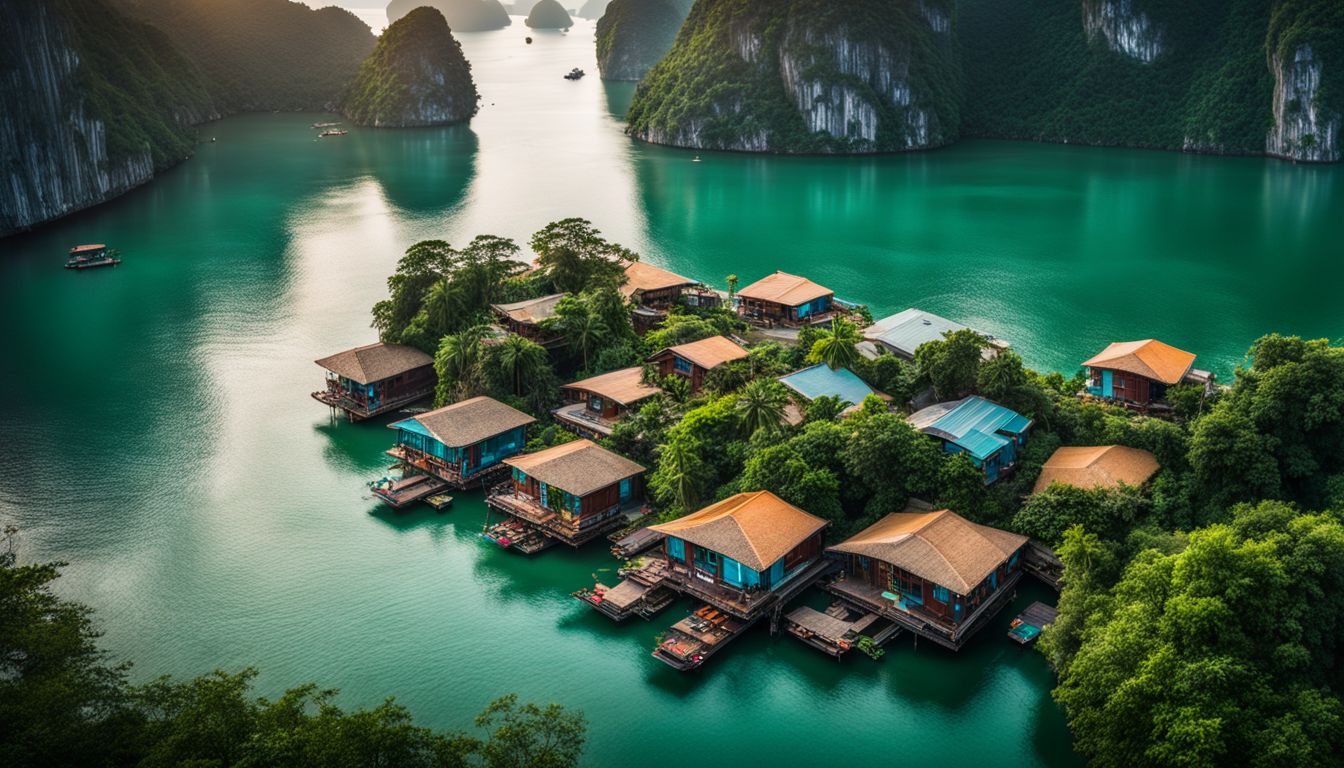
The design and architecture of floating homes in Vietnam are focused on sustainability. Architects draw inspiration from traditional building methods and vernacular architecture to create eco-friendly floating communities.
One notable example is the use of solid bamboo construction, which is not only environmentally friendly but also resilient against the elements. H&P architects have even developed a prototype called the “floating bamboo house” using solid cored bamboo and latches.
These sustainable practices ensure that the floating villages in Halong Bay blend harmoniously with their natural surroundings, making them both aesthetically pleasing and ecologically sound.
Tourist Options for Visiting Floating Homes
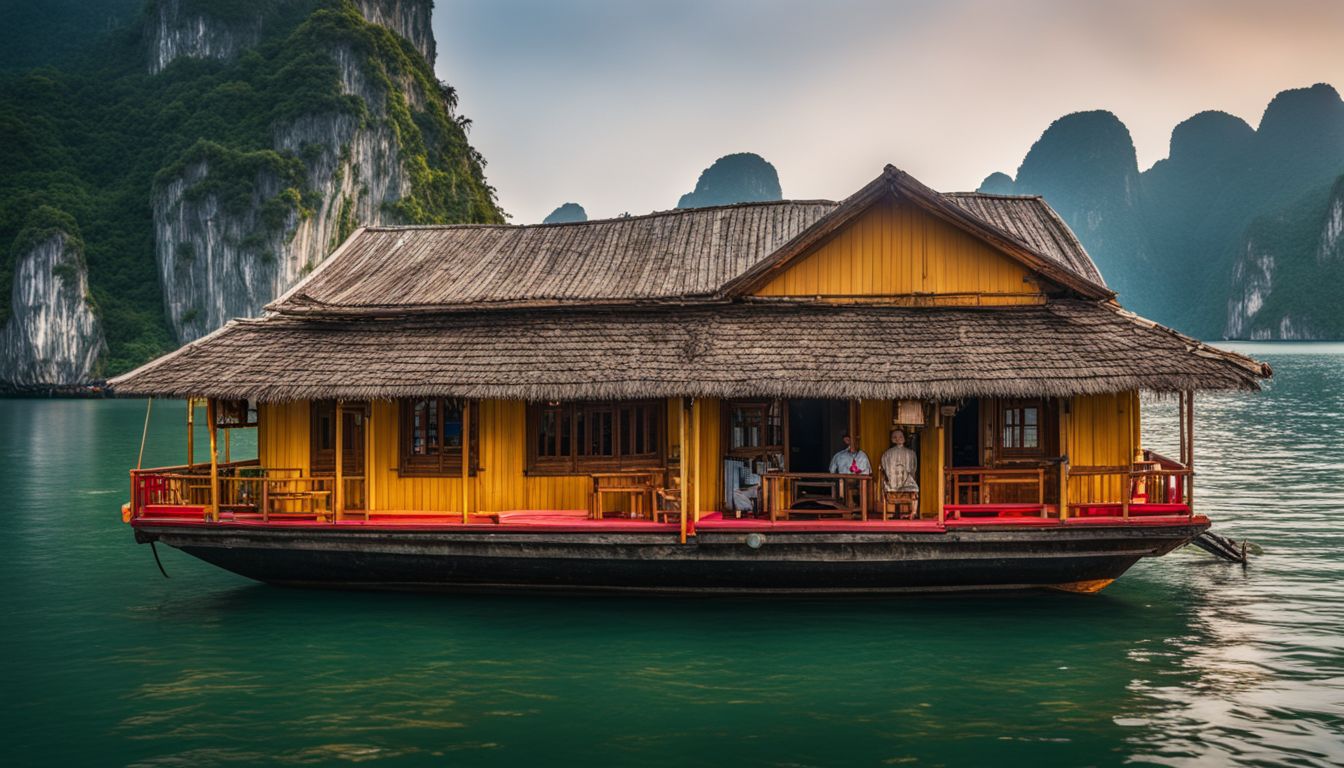
You have several options for visiting the enchanting floating homes in Halong Bay. You can choose to stay overnight on a Mekong Floating House or take an explorative day trip on small boats.
Mekong Floating House

The Mekong Floating House is located in the beautiful Mekong Delta region of Vietnam. It consists of five floating houses that provide accommodation for tourists. These unique floating homes offer a wonderful cultural adventure for travelers who want to explore the Mekong Delta and its attractions.
The design of the floating houses allows visitors to experience the local culture and immerse themselves in the stunning surroundings of the area. Many tourists stop at the Mekong Floating House during their visit to Vietnam, as it provides a memorable and one-of-a-kind experience.
Overnight Ferries
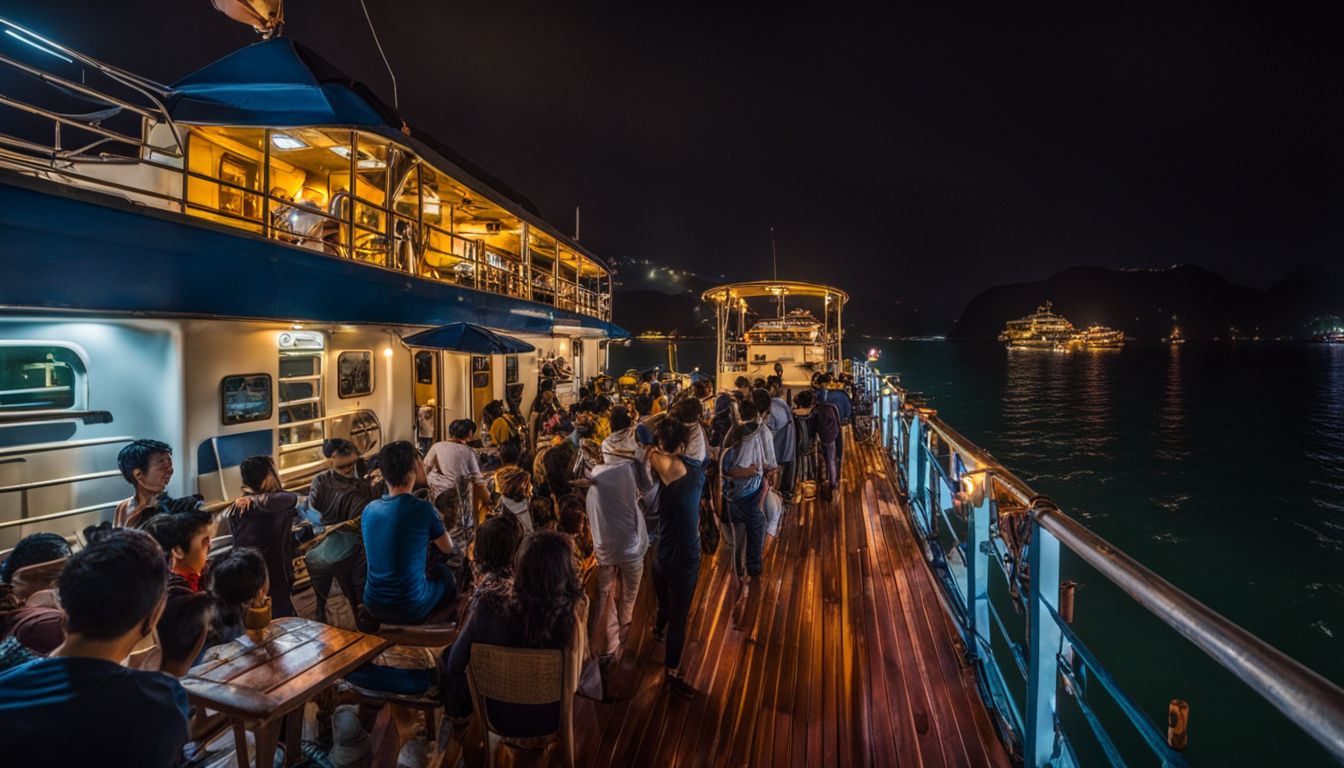 Halong Bay overnight cruises offer the opportunity to stay on a luxurious boat and explore the enchanting floating houses in Vietnam. These cruises are a popular choice for tourists looking for unique cultural experiences and maritime adventures.
Halong Bay overnight cruises offer the opportunity to stay on a luxurious boat and explore the enchanting floating houses in Vietnam. These cruises are a popular choice for tourists looking for unique cultural experiences and maritime adventures.
Starting from Tuan Chau International Marina, you can embark on day or overnight cruises to Halong Bay, Lan Ha Bay, or Cat Ba island. With options for 2 days 1 night cruises on traditional junk boats, you can enjoy luxury accommodations and indulge in the beauty of floating villages at your leisure.
Whether it’s visiting Mekong Floating House or exploring other tourist attractions, these overnight ferries provide an unforgettable experience of Vietnam’s floating homes.
Day Trip Options

When visiting Halong Bay and its enchanting floating villages, there are several day trip options available for you to explore these unique waterfront communities. One popular option is the Mekong Floating House tour, where you can take a boat excursion to visit the floating houses and learn about the daily lives of the villagers.
Another option is to hop on one of the overnight ferries that offer sightseeing trips around the bay, allowing you to see the floating villages up close. Alternatively, you can also choose from various day trip options offered by local tour operators, which include activities such as boating, visiting houseboats, and experiencing traditional water villas.
Whichever day trip option you choose, be prepared to immerse yourself in the rich culture and natural beauty of these fascinating floating communities.
The Cultural and Environmental Significance of Floating Villages
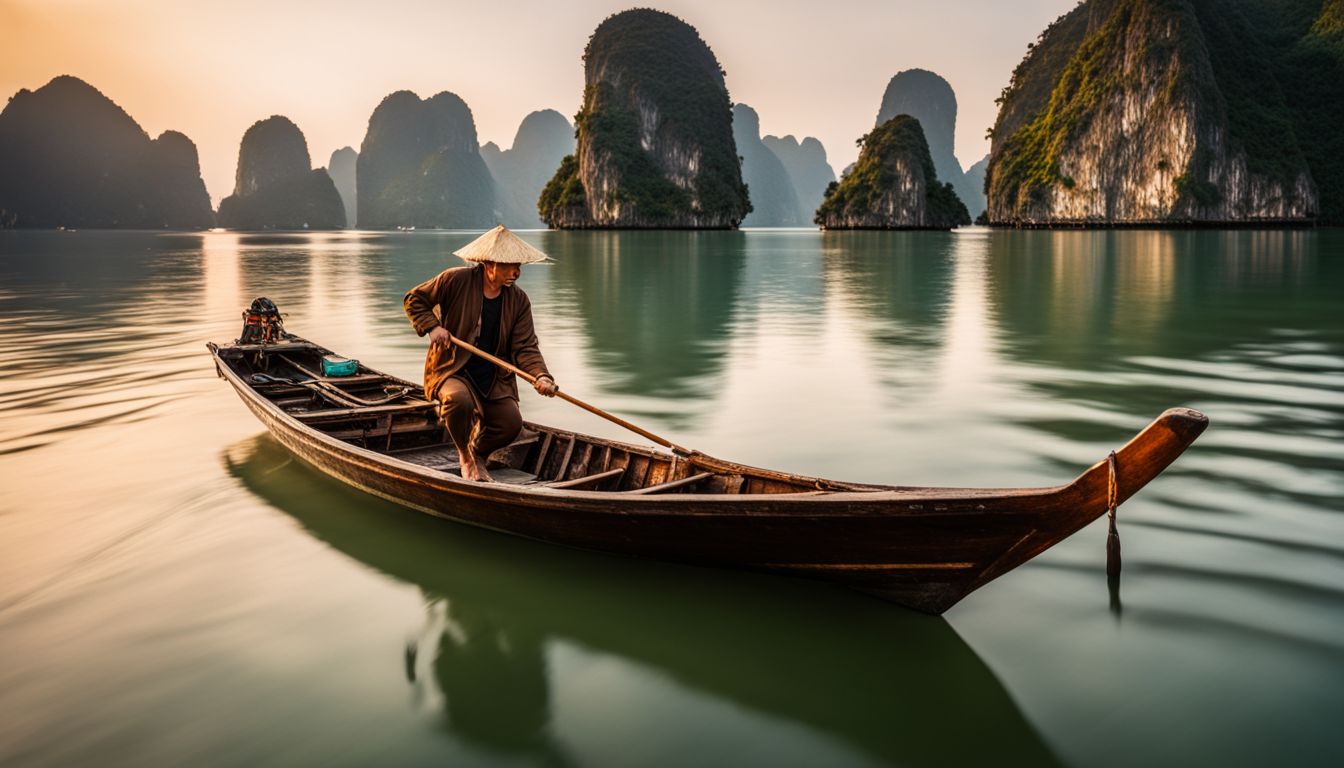
The floating villages in Halong Bay hold great cultural and environmental significance. These water communities are home to local fishermen who have lived here for generations, showcasing their unique cultural heritage.
The traditional way of life in these villages revolves around fishing, which has sustained the community for many years. Additionally, these villages contribute to the ecological preservation of Halong Bay as they are located within its UNESCO World Heritage site designation.
The wooden houses and fishing boats blend harmoniously with the karst formations and emerald waters, enhancing the natural beauty of this remarkable location. By visiting these floating villages, you not only witness a fascinating way of life but also support sustainable livelihoods and contribute to preserving this enchanting environment for future generations to enjoy.
How to Get to Halong Bay and Floating Villages

You can reach Halong Bay and its floating villages by following these simple steps:
- Fly to Hanoi, the capital of Vietnam.
- From Hanoi, take a bus or hire a private car to reach Halong Bay. It is about a 3-4 hour drive.
- Once you arrive at Halong Bay, hop on a boat or cruise to explore the floating villages.
- Alternatively, you can book an overnight ferry that takes you directly to the floating villages for a more immersive experience.
- Some tour operators also offer day trip options from Hanoi to Halong Bay and the floating villages.
The Wrap Up: Experiencing the Unique Charm of Floating Villages in Vietnam

– Halong Bay’s floating villages offer a unique and charming experience.
– You can immerse yourself in the traditional coastal living of these waterborne communities.
– Explore the cultural heritage and witness the local livelihoods in action.
– Boat tours allow you to navigate through the beautiful marine ecosystems surrounding these villages.
– The sustainable design and architecture of the floating homes are fascinating to see.
– Ecotourism plays an important role in supporting the preservation of these villages and their way of life.
Conclusion

In conclusion, exploring Vietnam’s enchanting floating houses in Halong Bay is an experience like no other. From the long history and pristine beauty of the villages to the unique maritime culture, there is so much to discover and appreciate.
Whether you choose a small boat trip or an overnight ferry, visiting these serene floating villages will leave you with lasting memories of this beautiful corner of Vietnam. So pack your bags and get ready for a truly enchanting adventure in Halong Bay!
FAQs
1. How can I explore the floating houses in Halong Bay?
You can explore the enchanting floating houses in Halong Bay by taking a boat tour or cruise that will bring you to these unique and picturesque dwellings.
2. Are the floating houses safe to visit?
Yes, the floating houses in Halong Bay are generally safe to visit as they are well-maintained and designed to withstand the water conditions. However, it is always advisable to follow safety instructions and guidelines provided by your tour operator.
3. What can I expect to see when exploring the floating houses?
When exploring the floating houses in Halong Bay, you can expect breathtaking views of the bay, traditional Vietnamese architecture, vibrant colors, and a glimpse into the daily lives of those living on water.
4. Can I stay overnight in one of the floating houses?
Yes, some floating house operators offer accommodation options for visitors who want an immersive experience. You may choose to spend a night on one of these unique dwellings while enjoying beautiful sunsets and tranquility surrounded by nature.
5. How do I get to Halong Bay for exploring the floating houses?
To get to Halong Bay for exploring its enchanting floating houses, you can book a domestic flight from Hanoi or take a bus ride which usually takes around 4 hours. Once there, join a guided tour or hire a local boat service at one of several ports along the shoreline.

